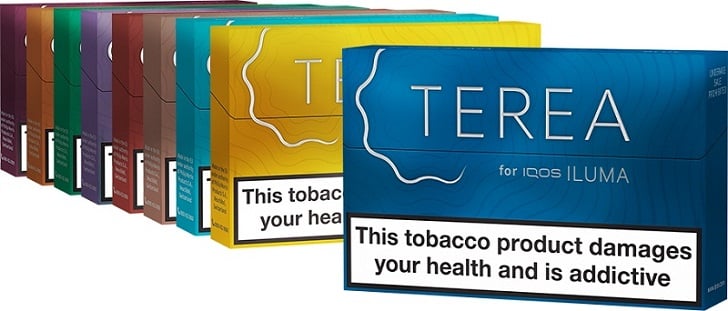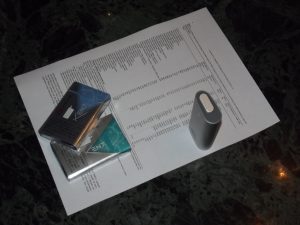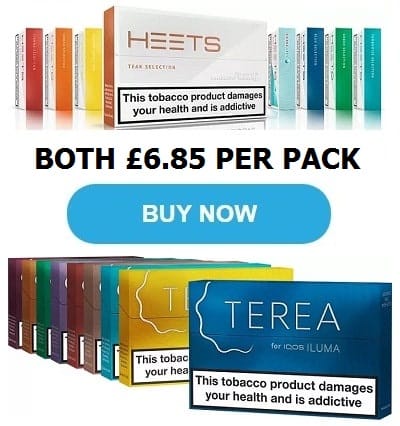
A tale of two meta-analysis
Last month (October 2019) saw the publication of two meta-analysis of heat-not-burn research that looked at both industry, and independent, science. However, the tone of both papers was markedly different. The first of which, entitled “New ideas, old problems? Heated tobacco products – a systematic review” leaned more towards the “eh, they’re not all that good really” type conclusion despite the clear evidence that they are; while the second – entitled “Human Biomarker Exposure from Cigarettes versus Novel Heat-Not-Burn Devices: A Systematic Review and Meta-Analysis” – was somewhat more positive. I don’t make up the titles by the way.
In the first paper, the authors take great care in segmenting the various results by looking at the following sections:
- Chemical composition of the tobacco sticks
- Chemical composition of the aerosol
- Evidence from experimental animal and cellular studies
- Potential impact on human health
- Frequency of use
- Marketing strategies
To be completely honest, the final two are rather pointless. Does it really matter how often a user pops a HEET into a device and puffs, or how the product is marketed? While seemingly irrelevant to the whole discussion, the frequency of use does have the potential to alter the outcome on the potential impact on human health. So, it does warrant closer investigation.
The second paper ignored cell, and in-vitro studies (rightly so as they are all but meaningless), while focussing on results that directly affected human exposure. Furthermore, the second paper looked at RCT’s – Randomised Controlled Trials.
The first paper looks at both industry and independent research, while the second (due to lack of independent research) only looks at industry research. This is critical for several reasons. As we know, tobacco control – and ‘public health’ in general – are incredibly mistrustful of the tobacco industry. Rightly so in some cases. But let’s face it, the science that the industry generates now is of far better quality than a lot of the garbage that emanates from activists posing as tobacco control researchers. After all, the industry is under a much larger and far more intense microscope now then it was during the whole MSA shenanigans.
Without further ado, let’s dive in and look at some science.
In both cases, the number of studies that were eligible for inclusion in both analyses was less than 100 (97 for the first, and only 10 for the second). While the numbers may seem low, it is in fact the quality we are looking for. Particularly with the second analysis, which is where I’ll start.
As the analysis is looking at biomarkers of exposure (BoE) – which are used to assess potential health risks when exposure measurements and health effects occur during the same period of time. Exposure assessment is the determination of the concentration of a chemical in an environmental medium coupled with the presence of the human in that environment. A biomarker of exposure gives an assessment of absorbed dose in the worker.
In the case of the second analysis, the authors were looking for specific carcinogenic compounds and tobacco specific nitrosamines (also carcinogenic – generally associated with ‘cancer causing’ outcomes). In the studies analysed, the use of either cigarettes or HnB was generally unrestricted and those papers found that the use of HnB capsules/sticks were generally comparable to the number of conventional cigarettes.
This comes as no great surprise as, for many, those that use heat-not-burn are usually former (or current) smokers. So, it makes a great deal of sense that a user of HnB would use comparable numbers of sticks as they would if they smoked. The only real non-difference between all the studies analysed in the biomarker paper is the total nicotine equivalent. In other words, the user received more or less the same dosing of nicotine as the cigarette group(s). Again, it makes total sense for the two products to be as similar as possible, while HnB reduces the various carcinogenic compounds.
The first study, “New ideas, old problems” incorporated both industry and independent science and, for the most part, both agreed the following:
- Comparable nicotine concentrations between heat-not-burn and cigarettes
- Substantially lower levels of carbonyls than cigarettes
- Lower levels of formaldehyde (av 91.6%), acetaldehyde (av 84.9%), acrolein (av 90.6%) and crotonaldehyde (av 95.3%) than cigarettes
As the title of the paper suggests, there is (of course) a leaning towards a “not all that good really” with comparisons of the levels emitted from heat-not-burn and e-cigarettes. Which, as you no doubt guess, totally misses the point of the products. Both are reduced risk products. Not risk elimination products.
The results of in vitro and in vivo assessments of HTP aerosols revealed reduced toxicity, but these were mainly based on studies sponsored by the tobacco industry. Independent human-based studies indicated that there was a potentially harmful impact of the active and passive HTP smoking on human health.
JANKOWSKI, M., BROŻEK, G. M., LAWSON, J., SKOCZYŃSKI, S., MAJEK, P., ZEJDA, J. E. (2019). NEW IDEAS, OLD PROBLEMS? HEATED
TOBACCO PRODUCTS – A SYSTEMATIC REVIEW. INTERNATIONAL JOURNAL OF OCCUPATIONAL MEDICINE AND ENVIRONMENTAL HEALTH.
https://doi.org/10.13075/ijomeh.1896.01433
This is a lazy argument, and one that is thoroughly debunked by the second analysis paper. It does, however, highlight a groaning bias within ‘public health’ as the industry studies are done out of necessity to convince sceptical regulators that their products are ‘appropriate for the protection of public health’ – an effort that has garnered some reward.
What both analyses show, and in particular the first one, is that independent researchers are doing what science does best. Replication, replication, replication. If an outcome can be consistently replicated – with a suitable margin of error – then the result must therefore be true.
Both analyses conclude that the claims made by industry papers are in fact supported by the evidence and that the industry science is actually rather well done.










